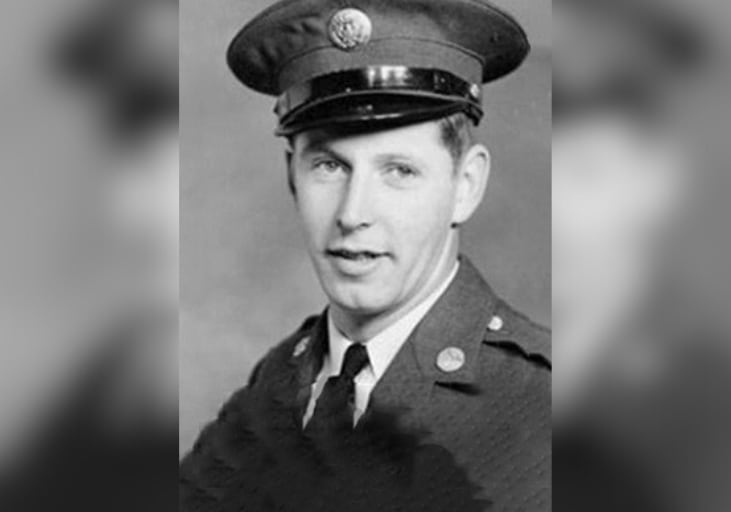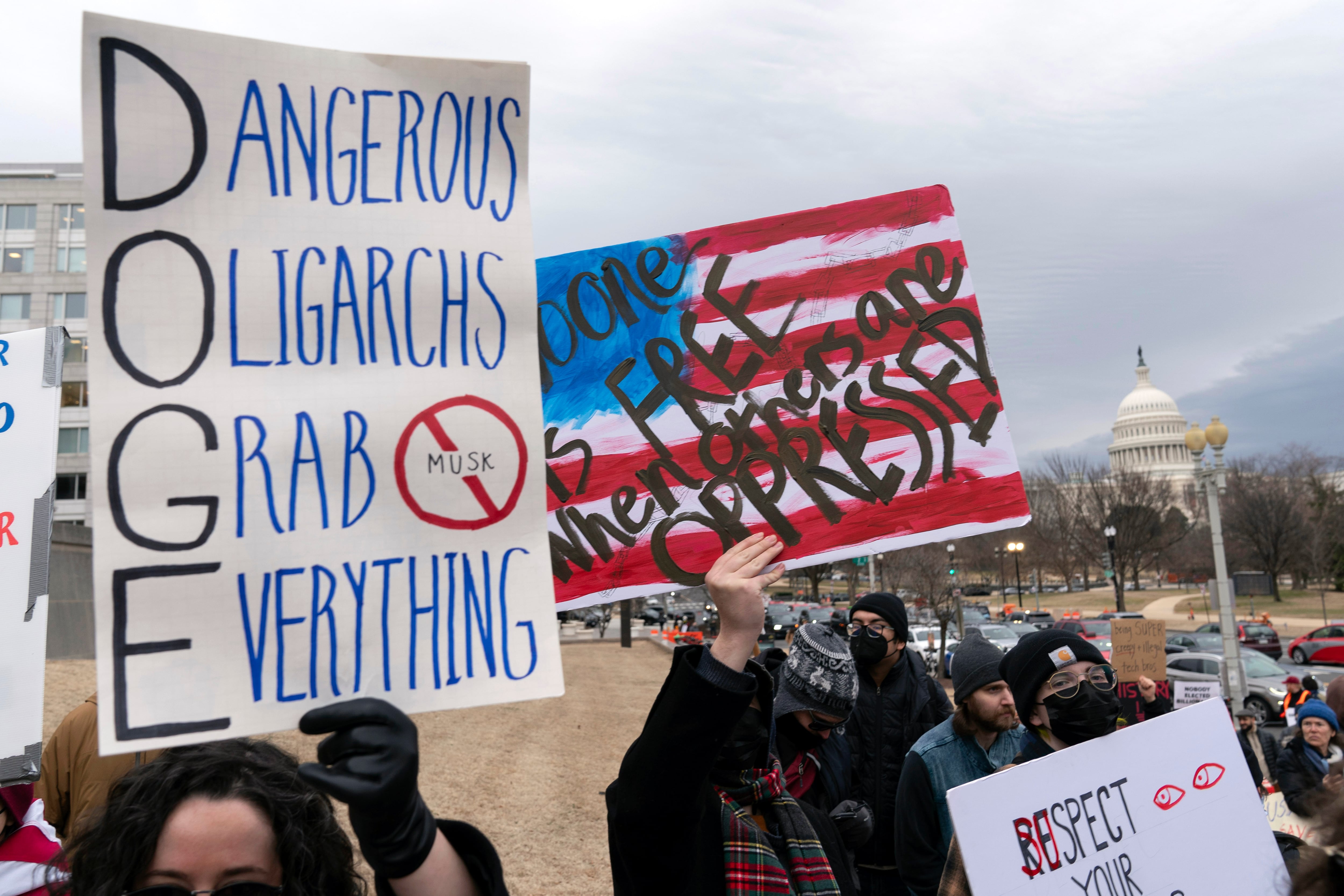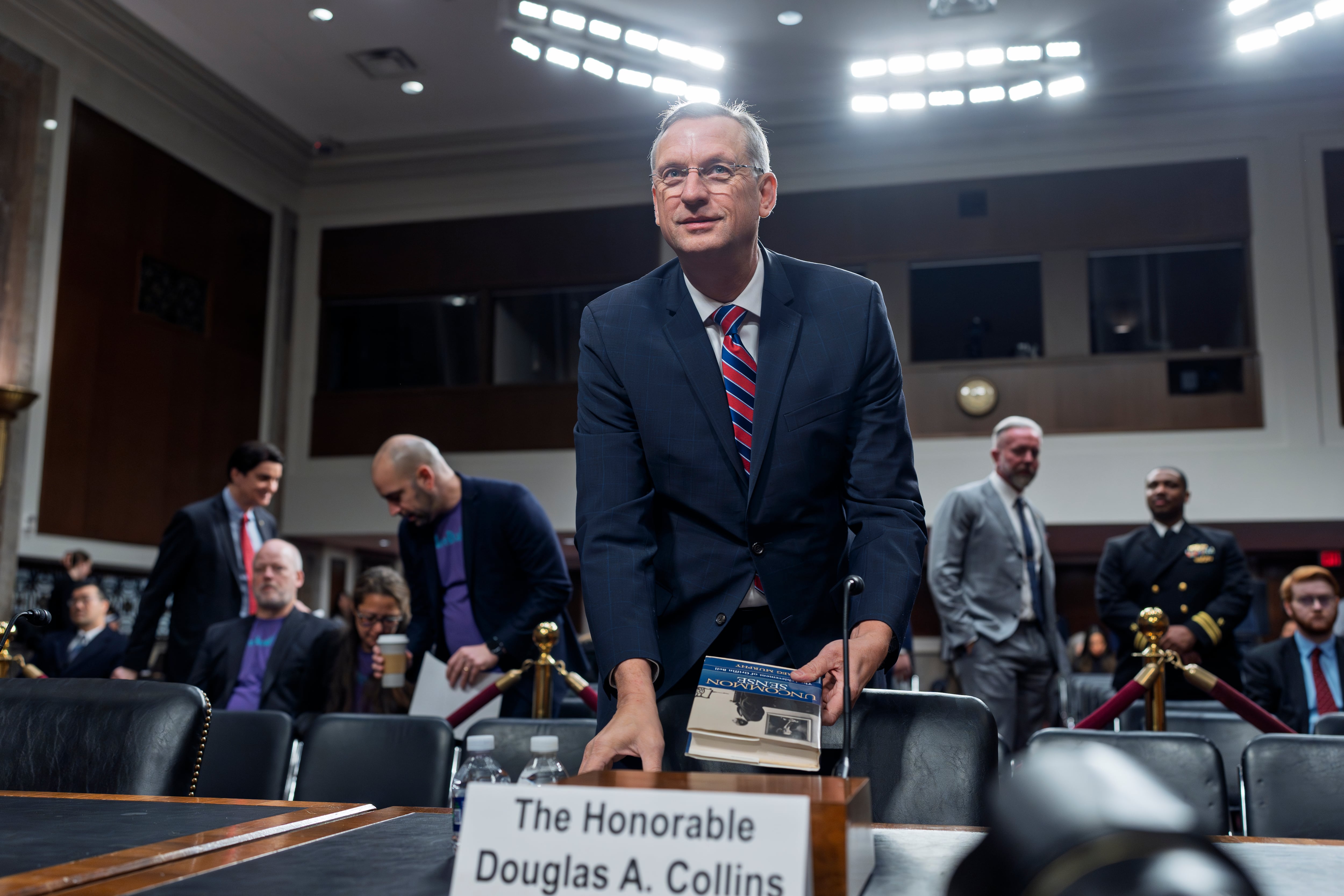Thirty years ago, U.S. women earned the right to fly in combat, but the full story of how it happened is largely unknown. From the first women in the military in World War II to the final push in the 1990s, Eileen Bjorkman’s new book, “The Fly Girls Revolt: The Story of the Women Who Kicked Open the Door to Fly in Combat” (Knox Press) chronicles the actions of a band of women who overcame decades of discrimination and prevailed against bureaucrats, chauvinists, anti-feminists, and even other military women.
Drawing on extensive research, interviews with women who served in the 1970s and 1980s, and her personal experiences in the Air Force, Bjorkman weaves together a riveting tale of the women who fought for the right to enter combat and be treated as equal partners in the U.S. military.
On the Brink of Victory
On August 9, 1990, two days after the start of Desert Shield, Army Captain Victoria Calhoun, a CH-47 “Chinook” helicopter pilot at Fort Bragg, deployed to Dhahran, Saudi Arabia, as part of an advance party to conduct reconnaissance and prepare the base for more arrivals. Calhoun found the adventure she had sought for years. The weather was horribly hot. Thousands of microscopic sand pellets from frequent dust storms blasted unclothed skin, and the sand clogged everything—tents, food, weapons, and aircraft parts.
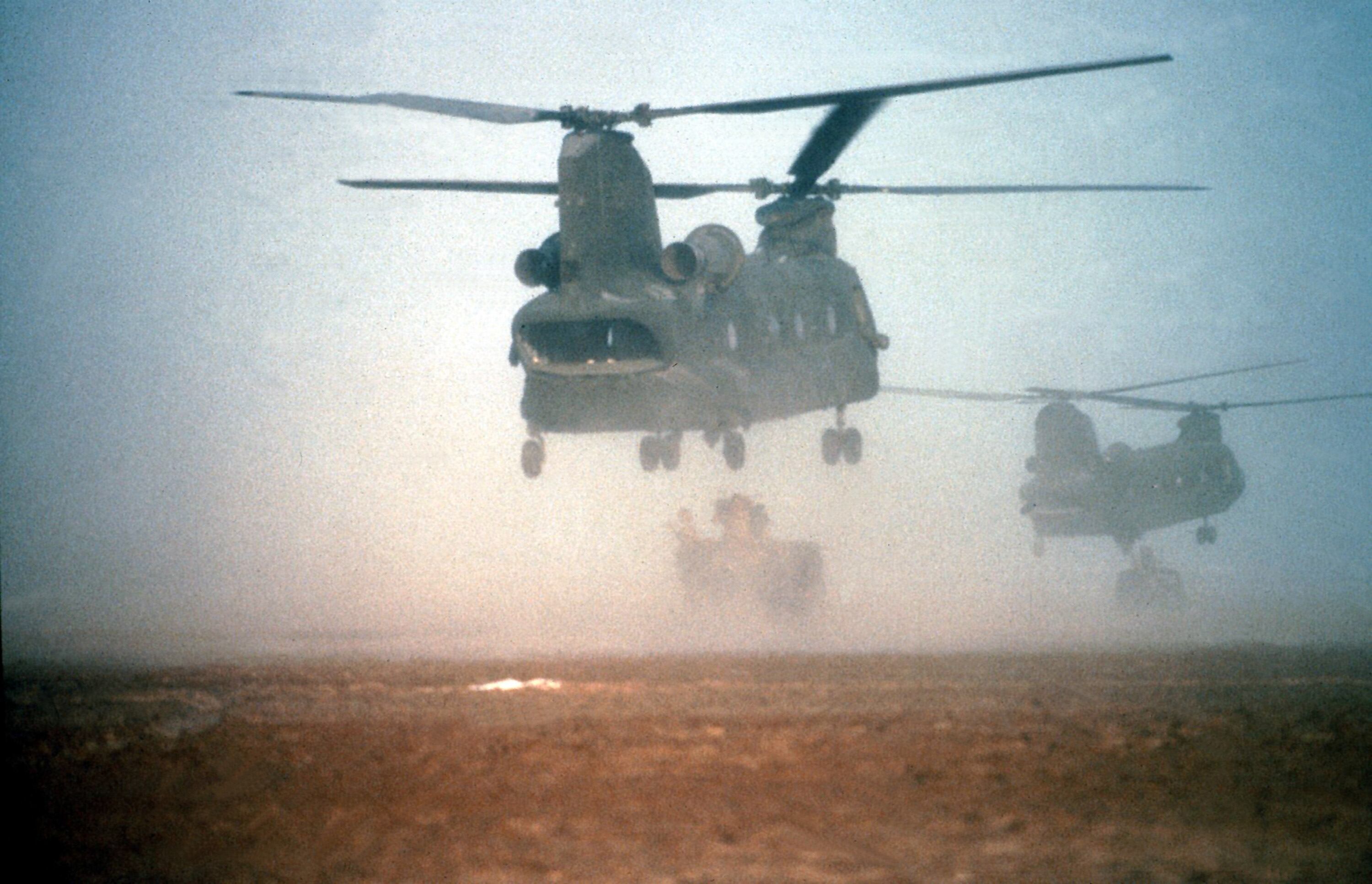
After earning her ROTC commission, Calhoun had trained for field artillery, then went to flight school at Fort Rucker and on to West Germany, where she asked to fly the Army’s newest helicopter, the UH-60 “Black Hawk.” A superior officer denied her application saying, “A woman’s not going to get to fly a UH-60 before I do.”
Calhoun opted instead for the Chinook and cut her teeth flying in Germany’s rugged mountains. In 1989, she requested a transfer to Fort Bragg, figuring if any action happened, it would be from there. She was right. That December, her unit deployed to support the Panama invasion. But her operations officer wouldn’t let her go because he didn’t think women should be in hostile territory. Even worse, he replaced her with a less-experienced male pilot.
Seven months later, she feared she might also sit out Desert Shield. Calhoun’s battalion commander called the unit together to address them about the upcoming deployment. The operations officer who had cut her from the Panama mission asked, “Are the women going?”
The battalion commander looked perplexed. He said, “They have to go; we’re not mission capable without them!”
While Calhoun helped the Army settle into Saudi Arabia, Air Force crews began hauling tens of thousands of people and millions of pounds of equipment to the Middle East. Reserve units in the U.S. began activating. Units with cargo aircraft were in high demand, and cargo reserve units, where women aviators were concentrated, were among the first to activate.
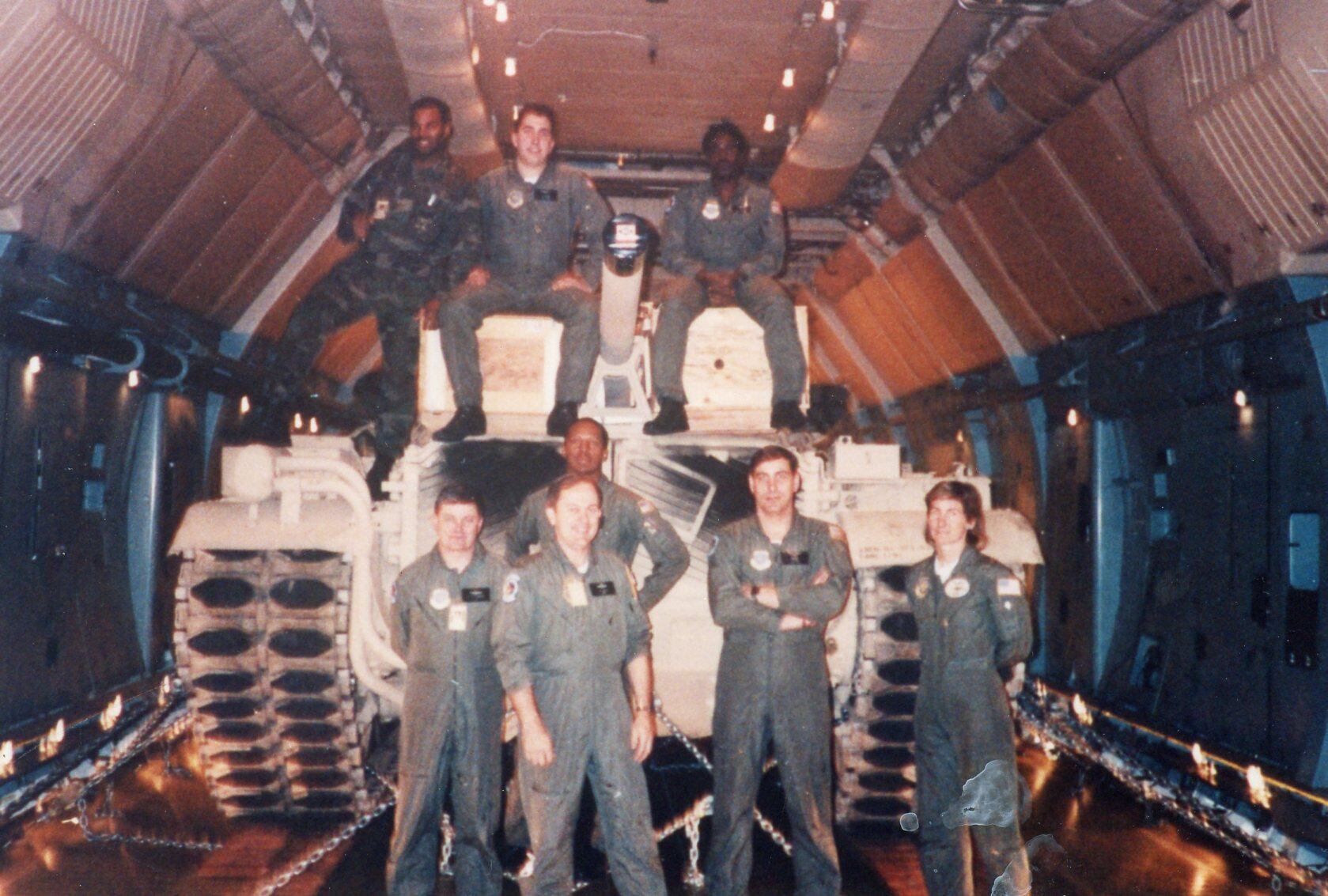
Army officers weren’t the only ones confused about whether women were supposed to deploy. On August 6, Stephanie Wells, a C-5 cargo pilot, called her reserve unit at Kelly Air Force Base, Texas, to volunteer to fly missions to the Middle East. The chief pilot told her women were excluded.
The pronouncement shocked Wells. She couldn’t understand why women weren’t eligible. Maybe the Saudis had requested no women?
The chief pilot called Wells back at ten thirty the next evening. Women weren’t excluded after all. She started packing her bags.
On August 13, Wells flew her first Desert Shield mission, loading cargo in the U.S. and flying it to the east coast of the U.S. The next day, she flew to Rota, Spain, and then on to Sigonella, Italy. Sigonella was a zoo—aircrews swapped stories about thirty-hour days with only ten hours of crew rest and being crammed into rooms with three people all trying to get some sleep.
On August 28, while Wells was back home in Houston, one of her unit’s C-5s crashed on takeoff from Ramstein, Germany. Only one crewmember survived. Wells was selected to notify the aircraft commander’s family of his death, since the family lived north of Houston. She and a chaplain from the local Air National Guard unit donned their service uniforms and arrived at the house at midnight. It was one of the hardest things she ever had to do. She wrote in her diary, “Tough! Tears my heart out. Tears flow. Emotions out of control.”
During peacetime, the C-5s might have been grounded after a crash or perhaps had some restrictions put on them while investigators figured out what happened. But with the war, the aircraft kept flying.
By early October, enough coalition forces were in place to blunt an Iraqi attack into Saudi Arabia, but an offensive operation to dislodge Iraqi forces from Kuwait needed much more coalition equipment and personnel, so the stream of transport aircraft into Saudi Arabia continued unabated. The United Nations Security Council set a deadline for Iraq to withdraw: January 15, 1991.

Wells flew to Bahrain on January 15. Everyone suited up in their chemical warfare gear. The Iraqis didn’t budge. The deadline passed. Nothing happened.
The next morning, Wells was the most frightened she had been since she’d been activated. The war seemed inevitable, but when?
The next morning, Wells wrote, “THEY DID IT!”
Desert Shield turned into Desert Storm.
The day after Desert Storm started, Captain Christina Halli, a KC-135 tanker pilot at Minot Air Force Base, raised her hand to deploy. A couple of weeks later, she piloted a KC-135 tanker headed toward Iraq. Although it was night, she had the lights out on her aircraft. So did the other two dozen aircraft trailing nearby. The aircrews talked to no one, not even to each other.
Halli led the flight of four fighter aircraft assigned to her for refueling. Her tanker and the other aircraft in the strike package had departed from Incirlik Air Base in Turkey thirty minutes earlier. As Halli neared the Iraqi border, the boom operator extended the refueling boom. One at a time, Halli’s fighters slid in, maneuvering below and behind the larger aircraft, inching closer and closer until the operator plugged the boom into the fighter and fuel flowed.
Halli longed to fly one of the fighters. Her four years at the Air Force Academy had been studded with tales of combat bravery, especially stories about legendary fighter pilots like the maverick and mustachioed Robin Olds, whose “Wolf Pack” of F-4s shot down seven North Vietnamese MiG-21s in a single engagement. There were no legendary tanker pilots.
At Iraq’s northern border, Halli started a U-turn as she watched the fighters enter Iraq and split up for their individual targets. She and the other tankers then flew racetracks in the sky, waiting for the strikers to return in an hour or two. The orbits kept the defenseless support aircraft far from Iraqi anti-aircraft artillery and surface-to-air missile sites. But the enemy still shot at the larger aircraft, including once when a surface-to-air missile exploded above a tanker.
While they waited, Halli observed the light show in the distance. First, Iraqi anti-aircraft artillery lit up the sky as the fighters neared their destination; explosions from the ground followed as bombs and missiles pummeled the targets. The end of the light show signaled that it was time for her to prepare for the fighters’ return.
Halli maneuvered her tanker to a rendezvous point in the sky. The fighters shed their cloaks of darkness one at a time as they neared the tanker. In an intricate dance in the Syrian sky, thirsty aircraft gulped down fuel for their triumphant return to Incirlik.
After air forces demolished much of the Iraqi defenses, the ground war began on February 24. That day, Major Marie Rossi, the company commander of one of Victoria Calhoun’s sister units, appeared on CNN, saying, “This is the moment that everybody trains for—that I’ve trained for—so I feel ready to meet the challenge.”
On the second day of the ground war, Calhoun and her Chinook lifted elements of the 101st Airborne Division to Forward Operating Base Cobra, ninety-three miles inside Iraq. She never saw anyone shooting at her, but the missions inside Iraq allowed her to log twenty-two hours of combat time, just like her male counterparts. She came within ninety miles of Baghdad during one mission.
Offensive operations ended at 8:00 a.m. on February 28, but not the danger. Marie Rossi died the day after the cease-fire when her helicopter collided with an unlit radio tower during an early morning flight.
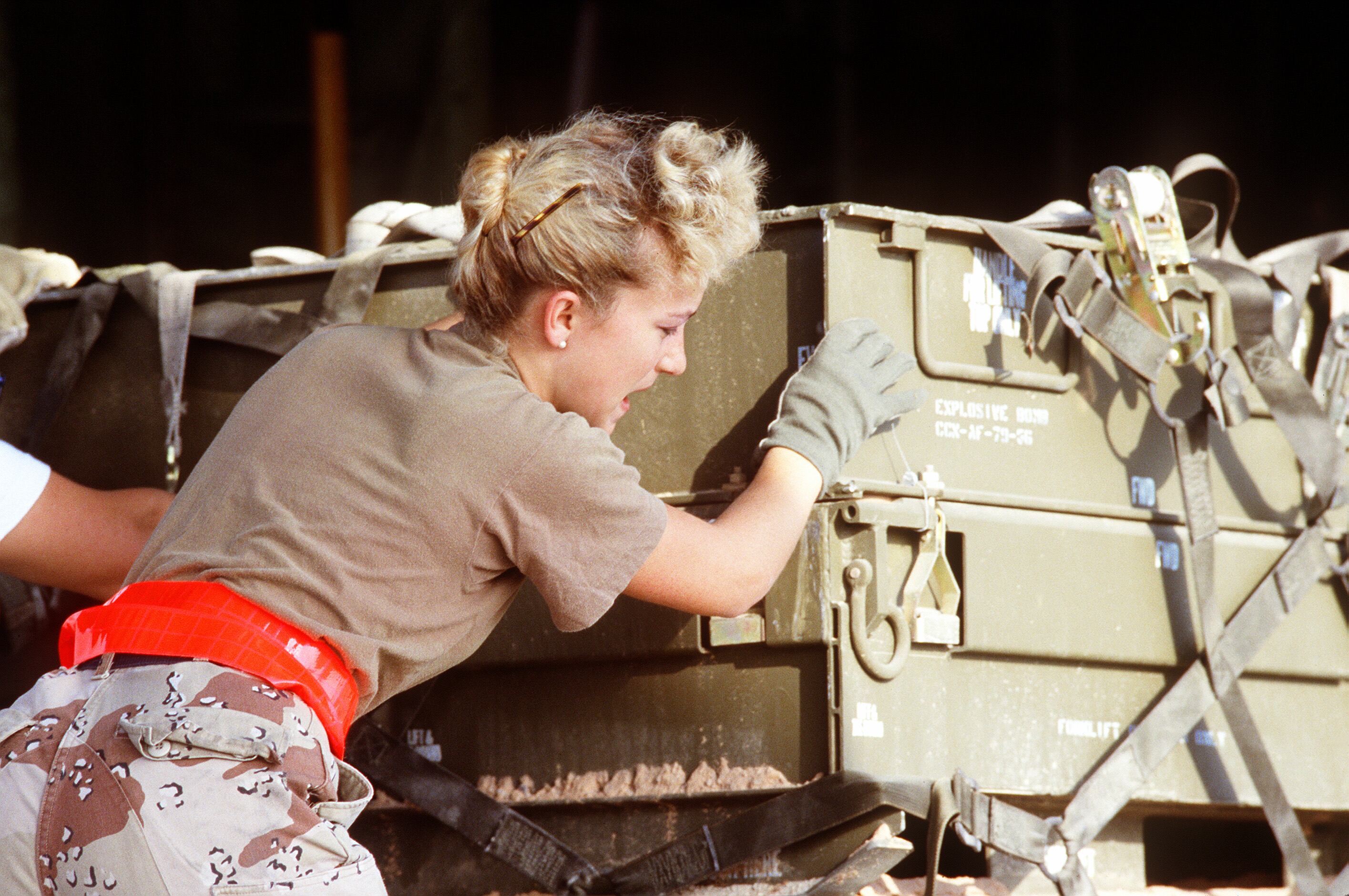
Thirty thousand women deployed during Desert Shield and Desert Storm. The combat exclusion law did not keep women from harm’s way: women logged combat time, thirteen died, twenty-one were wounded, and two became prisoners of war.
The war dispelled any remaining doubts about the capabilities of women under the pressure of combat. Their performance also shot down attacks on women that they were too weak, they would hurt unit cohesion, or they would get pregnant or claim family issues to avoid deploying. None of those predictions came true.
***
In the wake of Desert Storm, it was clear that women were part of the team. The U.S. military could no longer go to war without them. Americans also became more accepting of the idea that women could serve in hostile areas.
Thrilled by their performance and the public’s newfound acceptance, women aviators thought perhaps the archaic 1948 law that prohibited women from flying in combat would finally be repealed. The timing was perfect: within a few days of the war’s end, the House Armed Services Committee began hearings on the 1992 defense budget. It would be easy to slip a provision into the budget authorization bill that changed the law, and representatives Pat Schroeder and Beverly Byron did just that.
Carolyn Becraft, a former Army officer and advocate for women in combat, was shocked and thrilled when the defense authorization act, including the amendments to repeal, passed out of the committee with a 100 percent vote. On May 22, 1991, Becraft was even more amazed when the full House voted to repeal the combat exclusion laws.
The House vote gobsmacked both the Department of Defense and anti-feminist Elaine Donnelly, who opposed all women in the military. Donnelly and her supporters regrouped, and their hard lobbying against women in combat roles quickly made a dent. Senator John McCain, who had originally supported repealing the law, wobbled.
Becraft felt the momentum slipping away. She called Rosemary Mariner, one of the Navy’s first pilots. Less than a year earlier, Mariner had broken a barrier when she became the Navy’s first woman to command an aviation squadron, VAQ-34. Mariner hadn’t made it into Desert Storm, but she had trained male pilots who had.
Becraft told Mariner, “This is what you gotta do. This is important for you aviators. You can’t have one fifty-year-old Army dietician fighting for you. You gotta do it.”
“It” was a letter writing campaign. Becraft sent Mariner a list of members on the House and Senate Armed Services Committees and told them that Women Military Aviators members needed to write to all the lawmakers. “You need to say these laws restrict me from what I can do.”
But lobbying from the opposition had shifted the momentum. All four service chiefs testified at Senate hearings on the House bill that they opposed women flying combat aircraft or serving on ships other than hospital ships.
Senators William Roth and Edwards Kennedy weren’t ready to give up. The Senate would be debating the 1992 National Defense Authorization Act on July 25, and the two senators co-sponsored an amendment to that bill. The amendment did not have to go through committee; it would be voted on by the full Senate. But passage was uncertain.
Then the opposition made an unforced error. On July 18, the Washington Times published an article by reporter Suzanne Fields, who had recently flown in the back seat of an Air Force F-15 fighter airplane at Langley Air Force Base. Her takeaway was that male pilots were right to be skeptical that women could deal with the physical demands of flying a fighter.
Heather Wilson, a 1982 Air Force Academy graduate, Rhodes Scholar, future congresswoman, and future secretary of the Air Force, was steaming after she read the article. Wilson had left the Air Force after deciding the service was not a viable career path, given the restrictions put on her. By 1991, she was involved with politics and, with the Senate hearings only a week away, she sent word to the WMA membership: “Activate your Rolodexes!”
Carolyn Becraft called Rosemary Mariner with a similar plea: “Get your women and come to Washington.”
The fight was on.
From “The Fly Girls Revolt” by Eileen A. Bjorkman. Copyright © 2023 and reprinted by permission of the author and Knox Press.
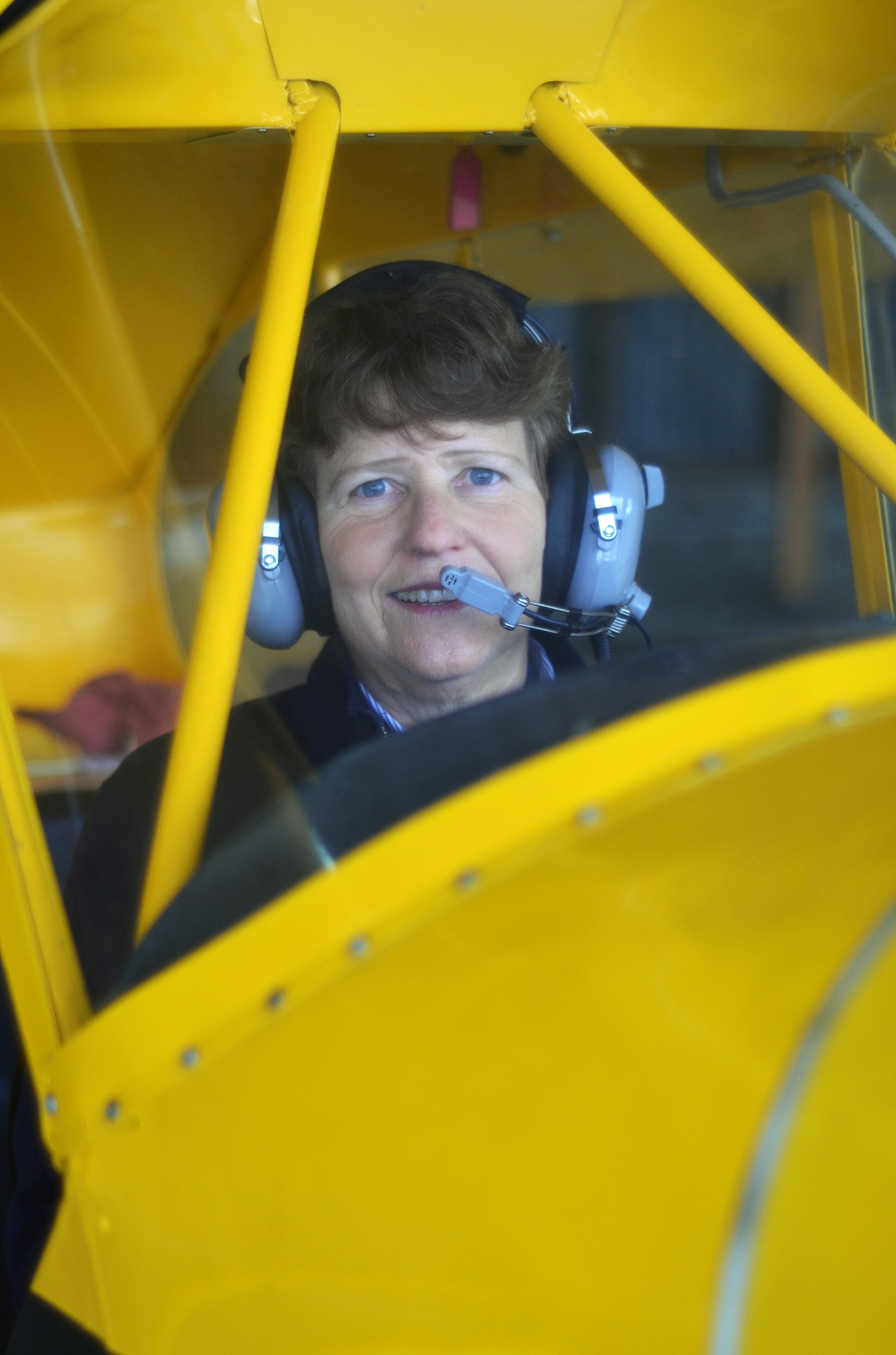
Eileen A. Bjorkman, author of The Fly Girls Revolt, is a writer, pilot, aeronautical engineer, and retired Air Force colonel. As the sixth woman to graduate from the Air Force Test Pilot School, she is widely recognized as an Air Force trailblazer. She was a flight test engineer during her Air Force career, flying more than 700 hours in twenty-five different types of military aircraft, including fighters such as the F-4 and F-16. She retired from the Air Force in 2010 as a colonel after thirty years of active-duty service. She is also a civilian pilot with more than 2,000 hours of pilot time. She is currently the Executive Director at the Air Force Test Center, Edwards Air Force Base, California and is the first woman to hold that position.
Have an opinion?
This article is an Op-Ed and as such, the opinions expressed are those of the author. If you would like to respond, or have an editorial of your own you would like to submit, please email us.
Want more perspectives like this sent straight to you? Subscribe to get our Commentary & Opinion newsletter once a week.


